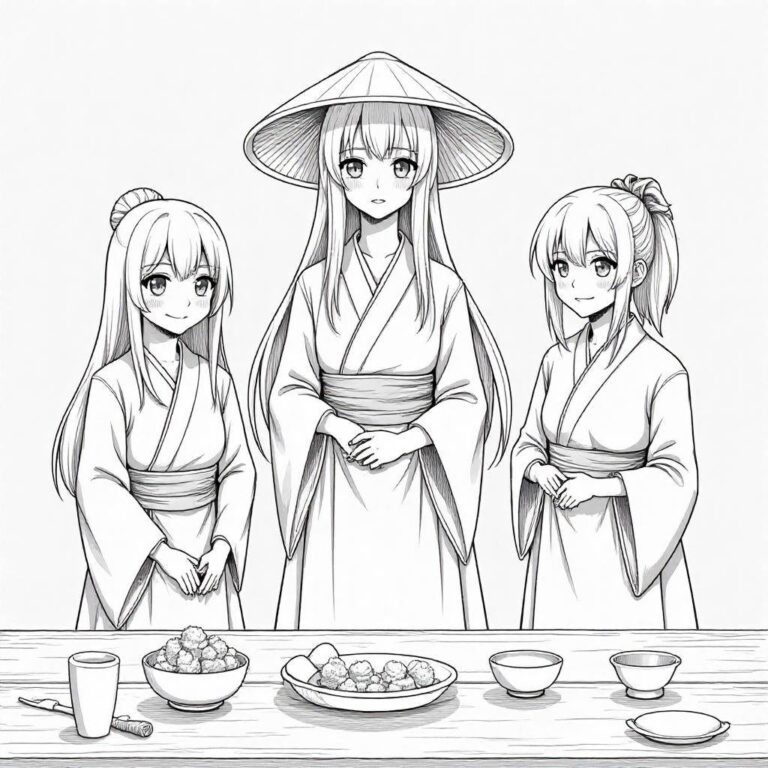Reader’s Question:
What is the Japanese anime work that is considered the origin of “fujoshi”? I feel like there were already elements of it during the era of Osamu Tezuka and Moto Hagio, even before the term “fujoshi” existed.
Understanding the Origins of “Fujoshi” Culture in Anime
The term “fujoshi,” which translates
to “rotten girl,” refers to female fans of manga and anime who have a strong interest in boys’ love (BL) content, often depicting romantic or sexual relationships between male characters. This subculture has a rich history, intertwined with the evolution of Japanese anime and manga. While the modern understanding of “fujoshi” is often linked to the 1970s and the burgeoning popularity of boys’ love stories, the roots of the culture can be traced further back to earlier works and movements. In this discussion, we will explore the origins of “fujoshi” culture, the psychological aspects of its appeal, the legal and ethical considerations within the anime industry, and actionable insights for both creators and fans.
Historical Context of Fujoshi Culture
The inquiry about the earliest influences on “fujoshi” culture raises several intriguing points. As noted in the user comments, significant elements existed before the term itself was coined. The 1975 establishment of Comic Market (Comiket) marked a pivotal moment for fans, allowing them to gather and share their works. Prior to this, however, influences can be seen in the works of Osamu Tezuka and Moto Hagio. Tezuka, often dubbed the “God of Manga,” created narratives that featured deep emotional bonds between male characters. While not explicitly BL, the subtext and intimacy in relationships provided fertile ground for future interpretations. On the other hand, Moto Hagio’s works in the 1970s explicitly featured themes of love between boys and contributed to the foundation of what would later be recognized as the boys’ love genre. The discussion also highlights that even earlier than these figures, there existed cultural artifacts that suggested a fascination with same-sex relationships. Historical figures, such as the ukiyo-e artist Kitagawa Utamaro and the author Murasaki Shikibu, demonstrated that the appreciation for nuanced emotional bonds between genders is not a modern phenomenon but rather a recurring theme throughout Japanese history.
The Psychological Appeal of Fujoshi Content
From a psychological standpoint, the appeal of “fujoshi” content can be examined through various lenses, including escapism, identification, and the exploration of forbidden desires. 1. Escapism: The narratives found within BL often provide an escape from the realities of everyday life. The fantasy of idealized relationships allows fans to immerse themselves in a world where emotional intimacy is prioritized, offering solace and a reprieve from societal expectations. 2. Identification: Many fans identify with the characters, often seeing aspects of themselves reflected in the storylines. For women engaging with male characters, there exists a unique dynamic where they may place themselves into the narrative, exploring their desires and identities in a safe space. This identification can foster a sense of community among fans, as shared experiences and fantasies create bonds. 3. Exploration of Forbidden Desires: Engaging with BL content allows fans to explore themes of love and attraction that may be considered taboo in broader societal contexts. This exploration can be both thrilling and liberating, offering a platform to challenge societal norms regarding gender and relationships.
Industry Analysis: Legal and Ethical Considerations
The rise of “fujoshi” culture and its intersection with the anime industry brings forth important legal and ethical considerations. 1. Copyright and Originality: As the fujoshi community often produces doujinshi—self-published works inspired by existing media—issues of copyright and intellectual property rights emerge. While the practice has been traditionally tolerated, the fine line between homage and infringement can lead to legal disputes. Creators must navigate these waters carefully, weighing the desire for expression against the potential for legal repercussions. 2. Representation and Ethics: The portrayal of relationships in BL narratives raises questions about representation. Critics argue that some works reinforce harmful stereotypes or diminish the complexity of male relationships to mere tropes. Ethical storytelling involves a responsibility to portray characters and relationships in a nuanced manner, avoiding oversimplification or fetishization. 3. Consumer Responsibility: Fans, too, have a role in shaping the industry. Supporting works that promote healthy representations of relationships and engaging in discussions around problematic tropes can influence creators and the broader market.
Character Psychology and Storytelling Ethics
The construction of characters in BL narratives often mirrors the psychological themes explored within the stories. The careful development of male characters allows for rich narratives that resonate with fans. 1. Character Development: Strong character arcs facilitate emotional investment from the audience. Characters that undergo significant growth, face internal conflicts, and navigate societal pressures create depth. For instance, the dynamics between characters often reflect complex issues such as vulnerability, trust, and love, which resonate with the audience’s experiences. 2. Ethical Storytelling: In crafting these narratives, creators must be mindful of the implications of their story arcs. Ethical storytelling involves portraying relationships in a way that is respectful and responsible, challenging harmful stereotypes while fostering empathy and understanding among audiences. 3. Cultural Impact: The narratives that gain popularity among “fujoshi” influence not just the anime community but wider societal perceptions of gender and sexuality. By challenging heteronormative narratives and celebrating diverse expressions of love, these stories can contribute to greater acceptance and understanding.
Practical Insights for Creators and Fans
For creators looking to engage with the “fujoshi” audience, and fans seeking to navigate this vibrant culture, several practical insights can enhance both the creative process and the consumption experience. 1. Engage with the Community: Creators should actively participate in discussions with fans to understand their desires and concerns. Social media platforms, fan conventions, and forums provide spaces for dialogue, allowing creators to refine their work based on audience feedback. 2. Educate on Representation: Both creators and fans should prioritize education around representation. Understanding the historical and cultural contexts of relationships depicted in their narratives can lead to more informed storytelling and consumption choices. 3. Support Diverse Narratives: Fans can uplift and support works that embrace diverse perspectives within the BL genre. By consuming and promoting varied narratives, fans contribute to a richer cultural tapestry that reflects a broader array of human experiences. 4. Participate in Legal Discussions: Creators should stay informed about copyright issues and engage in discussions about ethical practices in fan works. Understanding the legal landscape can help mitigate risks and foster a creative environment that respects original works. 5. Encourage Open Conversations: Both fans and creators should foster open conversations about the implications of the narratives they engage with. Discussing themes of consent, emotional health, and the complexities of relationships can deepen the understanding of the material and its impact.
Conclusion: Reflecting on the Journey of Fujoshi Culture
The journey of “fujoshi” culture is a testament to the evolving landscape of anime and manga, shaped by both historical influences and contemporary interpretations. As anime continues to gain global popularity, the voices of fans and creators will play a vital role in shaping the future of this subculture. By embracing the rich history, exploring the psychological underpinnings, and navigating the ethical landscape, we can contribute to a more inclusive and thoughtful portrayal of love and relationships within anime. As we reflect on the past and look to the future, I invite readers to share their experiences. What has your journey in the world of “fujoshi” been like? Have you discovered particular works that resonated with you or challenged your perspectives? Let’s engage in a dialogue that celebrates the multifaceted nature of this vibrant culture.



